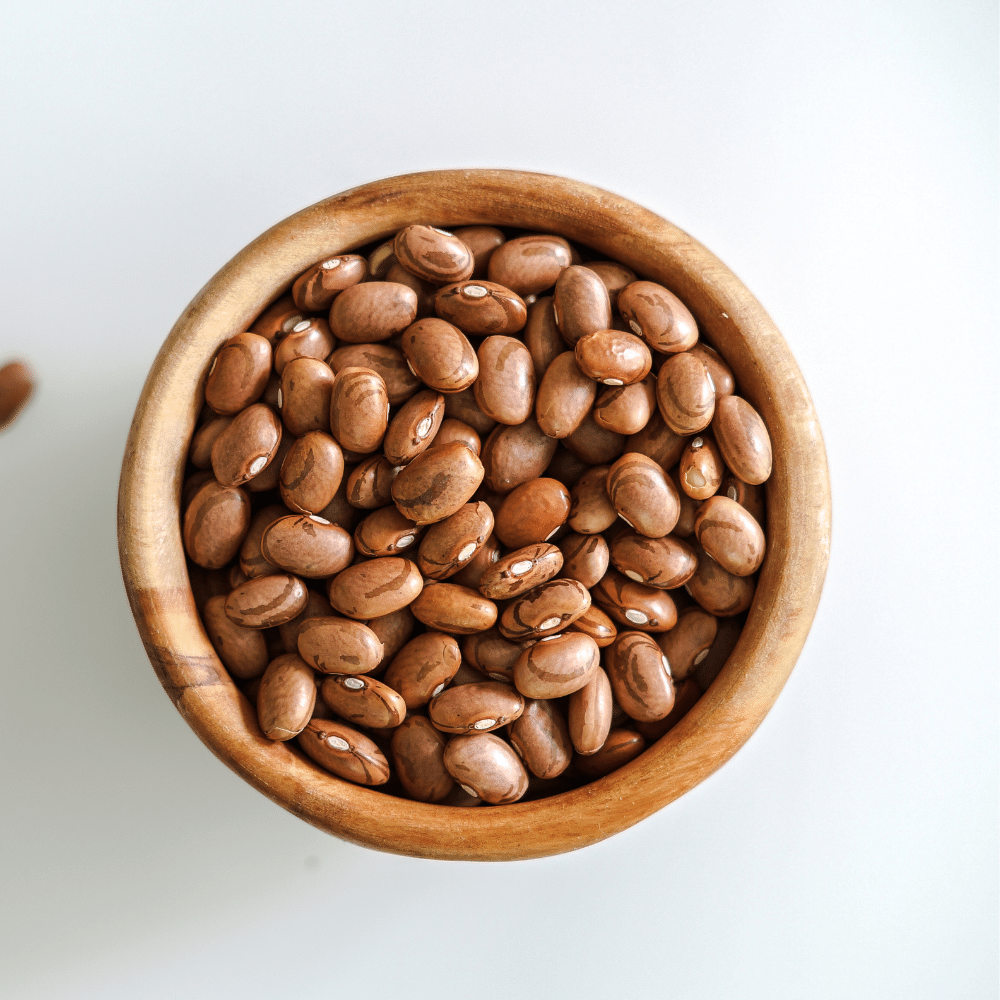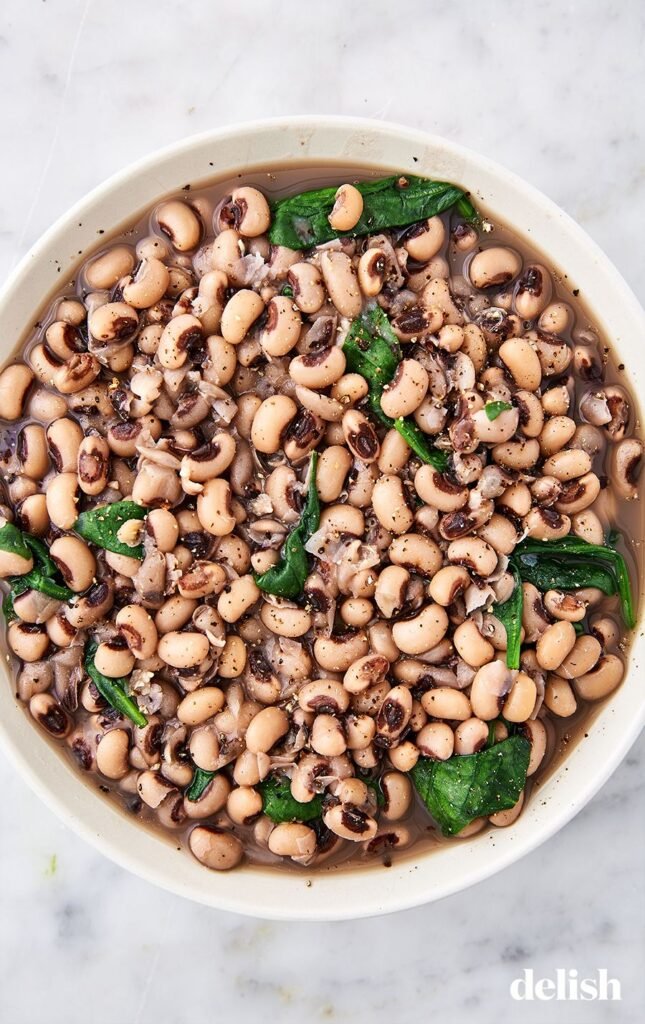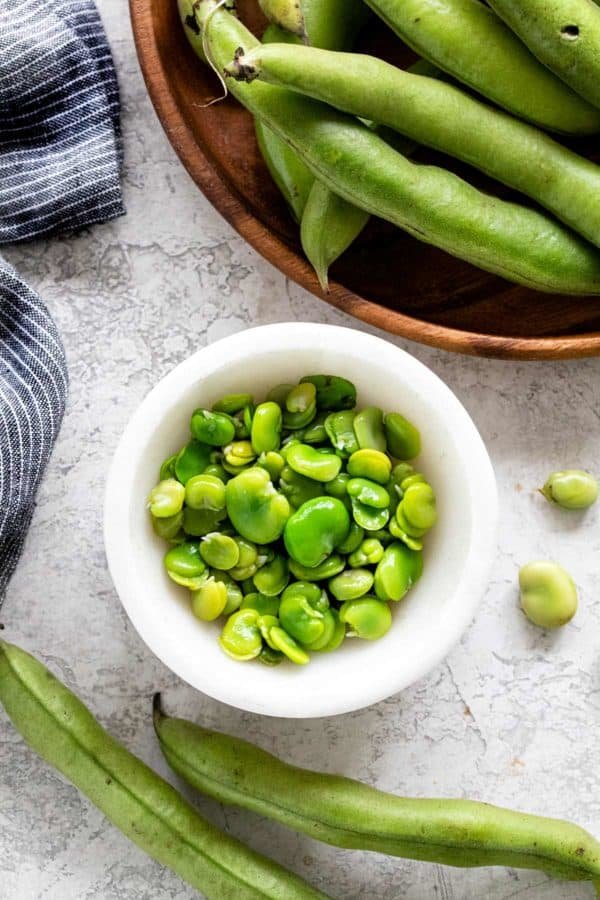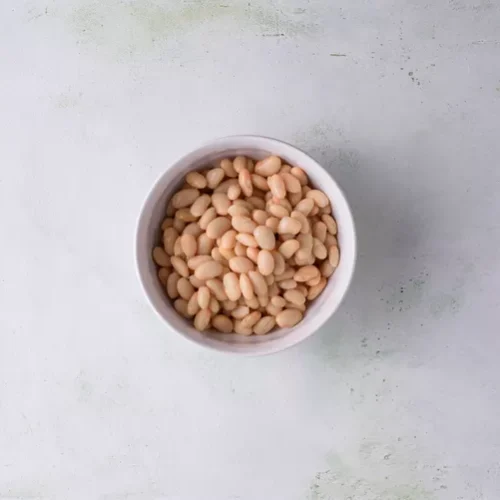Are you looking for a great substitute for Great Northern beans?
If so, you’ve come to the right place.
In this article, we’ll be discussing the various substitutes that can be used in place of Great Northern beans.
Great Northern beans are an excellent source of protein and dietary fiber, making them a popular choice among vegetarians and vegans alike.
They also have a mild flavor and creamy texture that make them ideal for soups, stews, salads, casseroles, and more.
Unfortunately, these versatile ingredients can sometimes be hard to find or too expensive for your budget.
Fortunately, there are plenty of other options available that can serve as suitable replacements.
Keep reading to learn about 11 of the best substitutes for Great Northern Beans!
What Are Great Northern Beans?

Great Northern beans (also known as white beans) are a type of legume that is native to the Americas.
They are large, white, and oval-shaped with a mild flavor and creamy texture.
Great Northern beans can be used in soups, stews, salads, casseroles, dips, and side dishes.
They are also popular for making baked bean dishes.
Great Northern beans have a high nutritional value; they are an excellent source of protein and dietary fiber as well as vitamins B1 and B6.
They contain minerals such as iron, magnesium, phosphorus, potassium and zinc which help to maintain healthy bones and teeth.
Additionally, they provide essential fatty acids like omega-3s which support heart health.
When cooking with Great Northern Beans it’s important to remember that they take longer to cook than other types of dried beans so plan accordingly when preparing meals or recipes using them!
11 Best Substitutes for Great Northern Beans
Great Northern beans are a tasty addition to soups and other dishes, but they can be hard to find in some places.
If you’re looking for an alternative, here are eleven substitutes that will still provide the same benefits:
1. Cannellini Beans

Cannellini beans are a type of white bean, also known as white kidney beans.
They have a creamy texture and mild flavor that makes them ideal for soups, stews, and salads.
How To Cook With Cannellini Beans
Before cooking with cannellini beans, it is best to soak them overnight in water or boil them for about 10 minutes to soften the skins.
After soaking or boiling, drain the beans and rinse with cool water before adding them to your recipe.
Cannellini beans can be cooked on the stovetop in a pot of boiling water for 30-45 minutes until tender. They can also be cooked in a slow cooker or pressure cooker for faster results.
Common Uses
Cannellini beans are often used in Italian cuisine such as minestrone soup and pasta e fagioli (pasta with beans).
They can also be added to salads or pureed into hummus-like dips.
For heartier dishes, cannellini beans can be mashed and seasoned like refried beans or used as an alternative to ground beef in tacos and burritos.
2. Pinto Beans

Pinto beans are a type of legume native to Central and South America.
They are small, oval-shaped beans with a mottled brown and tan outer skin.
The inside of the bean is white or yellowish in color. Pinto beans have a mild flavor and can be used in many dishes from salads to soups, stews, and chili.
How To Cook With Pinto Beans
Cooking pinto beans is easy and requires only a few simple steps.
- Start by sorting through your beans for any stones or debris, then rinse them under cold water.
- Place the rinsed beans in a pot with enough water to cover them by two inches, bring it to a boil, reduce heat to low, cover the pot and simmer for one hour until they are tender but not mushy.
- Once cooked you can use them as desired in recipes or mash them up into refried beans or other dishes.
Common Uses
Pinto beans are most commonly used in Mexican cuisine such as burritos, tacos, enchiladas, quesadillas, chilaquiles and more!
They can also be added to soups or stews for extra protein. Refried pinto beans are popular side dish served alongside rice or other grains like quinoa.
Additionally, they make an excellent addition to salads when cooked properly with some herbs and spices added for flavor!
3. Navy Beans

Navy beans are a type of small, white bean that is native to the Americas.
They have a mild flavor and creamy texture when cooked, making them perfect for soups, stews, and side dishes.
Navy beans are also known as Boston Beans or Yankee Beans because they were popular in New England during the 19th century.
How To Cook With Navy Beans
The most common way to cook navy beans is by boiling them in water until they’re soft.
You can also pressure-cook them if you want to speed up the process. It’s important to note that navy beans should never be eaten raw as they contain toxins that must be destroyed through cooking.
Once boiled, navy beans can be used in salads, soups, stews, casseroles and more!
Common Uses For Navy Beans
One of the most popular uses for navy beans is baked beans – a classic dish made with bacon or ham hocks and molasses or brown sugar.
Another popular use for navy beans is hummus – simply blend cooked navy beans with tahini sauce and seasonings like garlic powder and lemon juice for a delicious spread or dip!
Finally, you can mash cooked navy beans into burgers or meatloaf recipes to make them healthier without sacrificing flavor!
4. Black-eyed Peas

Black-eyed peas are a small, creamy-colored legume with a black spot on one side.
They have a mild flavor and are often used in Southern cuisine.
The beans can be dried or canned and can be cooked into dishes such as soups, stews, salads, and rice dishes.
How to Cook With Black-Eyed Peas
Dried black-eyed peas should be soaked overnight before cooking for best results.
To cook them quickly, rinse the beans and bring them to a boil in plenty of water.
Reduce the heat to low and simmer for about an hour until they are tender but not mushy.
Canned black-eyed peas can be added directly to recipes without soaking or boiling first; simply drain off any excess liquid before adding them to your dish.
Taste & Texture
Black-eyed peas have a mild flavor that is slightly sweet with earthy undertones.
When cooked properly, they will have a soft texture that is slightly chewy but still tender enough to break apart easily when pressed between two fingers.
5. Black Beans

Black beans are about the size of a pea, up to 1/2-inch long, with the slightly less pronounced boat shape common to kidney beans.
They have a satiny black skin and a white center.
Black beans are enjoyed by many cultures around the world, and are packed with flavor.
How To Cook With Black Beans
It can be helpful to make a big batch of beans and incorporate them into meals throughout the week.
For breakfast, black beans are often enjoyed mixed with eggs or served alongside eggs, rice, and tortillas. Black beans are delicious cold in a salad, mashed as a dip, or mixed into a veggie burger.
For heartier fare, black beans and rice is a classic, black bean chili is a popular variation on a beloved dish, and black bean soup is healthy and filling.
Taste & Texture
Black beans have an earthy flavor that pairs well with spicy seasonings like cumin or chipotle pepper powder.
They also pair nicely with sweet flavors like maple syrup or honey for added depth of flavor in dishes like baked goods or salads.
When cooked properly they should be tender but still firm enough to hold their shape when stirred into other ingredients such as soups or stews.
6. Chickpeas

Chickpeas, also known as garbanzo beans, are a legume that is popular in Middle Eastern, Mediterranean, and Indian cuisine.
They are small, round beige or tan beans with a nutty flavor.
How to Cook With Chickpeas
Chickpeas can be cooked from dried or canned form.
To cook dried chickpeas, they should first be soaked in cold water overnight before cooking.
Once soaked they can be boiled for 45 minutes to an hour until tender.
Canned chickpeas are already cooked and ready to eat. They should be rinsed before using them in recipes such as hummus or falafel.
Taste & Texture
Raw chickpeas have a firm texture and mild earthy flavor while cooked chickpeas have a creamy texture with a nutty taste that can take on the flavors of other ingredients it is cooked with such as herbs and spices like cumin and garlic powder.
7. Lima Beans (Butter Beans)

Lima beans, also known as butter beans, are a type of legume that is native to Central and South America.
They have a mild flavor with a slightly sweet aftertaste.
The beans range in size from small to large and can be found in both green and white varieties.
How To Cook With Lima Beans
Lima beans can be cooked in many different ways, including boiling, baking, steaming, or sautéing.
When boiling lima beans it is important to use plenty of water since the skins tend to become tough when cooked for too long.
Boil the lima beans for 15 minutes or until tender then drain off the excess water before serving.
For baking or sautéing lima beans it is best to first soak them overnight before cooking them with oil or butter for about 20 minutes until they are tender.
Taste & Texture
Lima beans have a creamy texture when cooked and a mild flavor that is slightly sweet with hints of nutmeg and cinnamon spice notes.
They are often used as an accompaniment to other dishes such as stews or soups but can also be enjoyed on their own as a side dish or snack food when seasoned with salt and pepper.
8. Fava Beans

Fava beans, also known as broad beans, are a type of legume native to the Mediterranean region.
They have a mild flavor and creamy texture when cooked.
Fava beans are high in protein and fiber and contain several vitamins and minerals.
How To Cook With Fava Beans
Fava beans can be enjoyed fresh or dried.
Fresh fava beans should be shelled before using.
Dried fava beans will need to be soaked overnight before cooking for about an hour until tender.
Once cooked they can be added to salads or soups or mashed into dips like hummus or used as a side dish with other vegetables such as carrots or potatoes.
Taste & Texture
Fava beans have a delicate flavor that is slightly sweet with notes of grassy earthiness.
The texture of cooked fava beans is creamy yet firm making them great for adding to dishes where you want some texture but don’t want something too crunchy like nuts would provide.
9. Kidney Beans

Kidney beans are medium-sized, reddish-brown legumes that get their name from the shape of a kidney.
They have a creamy texture and a mild flavor, making them popular in many dishes.
Kidney beans are high in fiber and protein and low in fat, which makes them an excellent addition to vegetarian diets.
How To Cook With Kidney Beans
There are many ways to cook with kidney beans.
They can be cooked on the stovetop or slow cooker, used as an ingredient for salads or soups, or even made into a dip.
When cooking on the stovetop, it is important to soak the beans overnight before cooking to reduce cooking time and make them easier to digest.
It is also recommended that you rinse off any excess liquid prior to adding them into your dish for optimal flavor.
Taste & Texture
Kidney beans have a mild nutty flavor but their texture can vary depending on how long they are cooked for.
If cooked for too long they can become mushy; however if cooked just right they will have a firm yet creamy texture that pairs well with other ingredients such as rice or vegetables.
The taste of kidney beans pairs well with spices such as cumin, oregano and chili powder which helps bring out its unique flavor profile without overpowering it.
10. Adzuki Beans

Adzuki beans are small, reddish-brown beans that originated in East Asia.
They have a sweet flavor and creamy texture, making them popular for use in desserts.
Adzuki beans are high in fiber and protein, as well as vitamins and minerals.
How to Cook With Adzuki Beans
Before cooking adzuki beans, it is best to soak them overnight or boil them for 10 minutes then allow them to sit covered for an hour.
This will help reduce the cooking time later on.
To cook adzuki beans on the stovetop, add 2 cups of soaked beans to 4 cups of water with 1 teaspoon of salt and bring to a boil over medium heat.
Reduce heat and simmer until tender (approximately 45 minutes).
The cooked beans can be used in soups or salads or enjoyed as a side dish with rice or other grains.
Taste & Texture
Adzuki beans have a slightly sweet taste and creamy texture when cooked properly.
When overcooked they become mushy; undercooked they can be too firm for some palates.
They pair well with savory flavors such as garlic, ginger, onion, herbs like cilantro or parsley, and spices like cumin or coriander powder.
11. Flageolet Beans

Flageolet beans are small, kidney-shaped beans that are light green in color.
These French heirloom beans have been around for centuries and were once a staple of the French diet.
They are known for their creamy texture and delicate flavor when cooked.
How To Cook With Flageolet Beans
Flageolet beans can be used in a variety of dishes, from salads to soups to stews.
They should be soaked overnight before cooking to reduce the cooking time and make them easier to digest.
After soaking, they can be boiled or simmered until tender, about 45 minutes to an hour depending on how long they were soaked for.
Once cooked, flageolets can be added to salads or served as a side dish with herbs and spices like garlic, rosemary, thyme, bay leaves, or parsley.
They also make a great addition to soups and stews as well as vegetarian dishes like veggie burgers or chili.
Taste & Texture
Flageolets have a delicate nutty flavor with hints of sweetness that pairs well with other flavors like garlic and herbs.
When cooked properly they should have a creamy texture similar to lima beans but slightly firmer than Great Northern Beans which makes them perfect for adding texture to dishes without overpowering the other ingredients’ flavors.
FAQ
What is the closest bean to Northern beans?
The closest bean to Northern beans is likely canned butter beans. Both are of the legume family and have a similar size, shape, and texture. Northern beans are slightly larger and have a milder flavor, while butter beans are slightly smaller and have a slightly sweeter taste. Both are great for soups, stews, and casseroles.
Are great northern beans similar to cannellini beans?
Yes, great northern beans and cannellini beans are similar in flavor. However, there are some differences in their texture. Cannellini beans tend to have a thicker skin, which makes their inside texture creamier than great northern beans. Great northern beans usually have a more tender skin and a slightly less creamy flesh. On average, cannellini beans measure 0.9 inches long after cooking, while great northern beans measure 0.69 inches long.
Can I use white beans instead of great northern beans?
Yes, you can use white beans, such as cannellini, instead of Great Northern beans. Both types of beans are a member of the same family, which makes them a suitable substitution for one another in many recipes. The main difference between the two types of beans is that Great Northern beans are slightly larger than cannellini beans. If you decide to use white beans in place of Great Northern beans, you may need to adjust the cooking times accordingly.
Conclusion
In conclusion, great northern beans are a versatile and flavorful ingredient that can be used in a variety of dishes.
However, if you don’t have great northern beans on hand, there are plenty of other beans that can be used as a suitable substitute.
The best substitutes for great northern beans are cannellini beans, pinto beans, navy beans, black-eyed peas, black beans, chickpeas, lima beans (butter beans), fava beans, kidney beans, adzuki beans, and flageolet beans.
Each of these beans has a slightly different flavor and texture, so you can experiment with different combinations to find the perfect flavor for your dish.
Using a combination of these beans is a great way to add depth and complexity to your dish, and ensure that you never have to go without great northern beans again.

11 Best Substitutes for Great Northern Beans
Ingredients
- Cannellini Beans
- Pinto Beans
- Navy Beans
- Black-eyed Peas
- Black Beans
- Chickpeas
- Lima Beans (Butter Beans)
- Fava Beans
- Kidney Beans
- Adzuki Beans
- Flageolet Beans
Instructions
- Pick your favorite substitute from the list above.
- Follow cooking directions for your selected substitute with the proper ratio of ingredients.
Jenny has always been passionate about cooking, and she uses her platform to share her joy of food with others. Her recipes are easy to follow, and she loves giving tips and tricks to help others create their own unique culinary creations.

